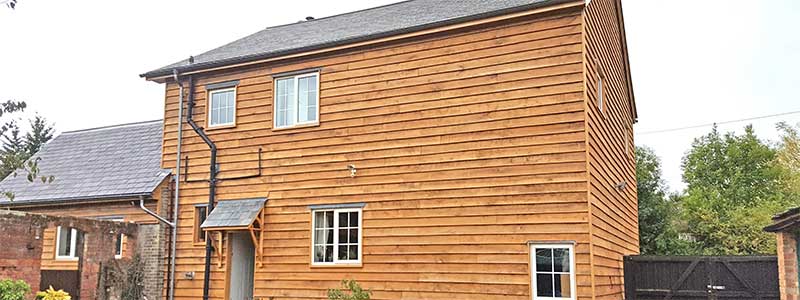Articles: Secrets of Oak Cladding
Oak cladding is available in both fresh sawn and kiln dried forms of Oak. Oak has been used for centuries as external cladding on homes, barns, sheds and a variety of other buildings. The timber has exceptional durability in outdoor conditions and can last for over 20 years.
Kiln dried Oak does need treating before being applied in order help stop as much moisture as possible from getting into the wood. This helps to keep the timber stable and stops the wood from expanding and contracting.
The kilned Oak is also easier to machine which it is why is available as T&G, Shiplap and Rainshield. When maintained properly these profiles are all secure and will protect the interior of the building from the elements.
Fresh sawn Oak works differently from that because the timber is still green when it is applied. Over time while the cladding is on the building, fresh sawn Oak will shrink in the width by around 3-4mm as it dries out over time. This is why it is important to overlap feather edge and waney edge Oak cladding enough to allow for the shrinking.

Movement of the timber
When Oak moves it naturally develops splits and cracks along the surface of the wood. This is natural and the effectiveness of the cladding will not be affected. Feather edge and waney edge oak (which are the two varieties of Fresh Sawn Cladding we provide) are the two most traditional forms of cladding and when you are looking for an old fashioned finish to your building these two just get better and better with age.
Even though the timber will move the durability and effectiveness of your cladding won’t be diminished. As the timber dries out it will become more stable and will move less although there will still be some movement throughout the seasons as the boards take on more moisture and dry back out again.







 Main Menu
Main Menu

